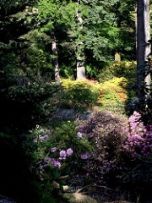Getting To Know Your Garden – Beginning With The Basics
If you are thinking about improving your garden then it is likely that you have all sorts of ideas buzzing around in your head. You will be thinking about what to grow – food, flowers or some glorious mixture of the two. No doubt you will have a vision, however fully formed, of how your finished garden will look and feel. It can be fun to dream of the perfect garden. But beware of jumping too far ahead, especially if you are a gardening novice. When planning to create the perfect garden, it is important to begin with the basics. A successful garden is always built from the ground up.
 Sunshine and Shade
Sunshine and Shade
Before you even think about creating a planting scheme for your garden, you should really get to know it properly. It is only when you have a thorough understanding of the environmental and situational factors acting on your garden that you can come up with a good design. Begin by thinking about the sun – where does it rise and set throughout the year? Which portions of the garden (if any) are in full sun and which are in shade? When are they in shade and for how long?
 Wind and Warmth
Wind and Warmth
Next, think about other environmental factors acting on your garden – the wind, for example. Where does the wind usually come from? Local environmental factors such as the way the wind funnels between buildings, for example, can be as important as overall facts about the general climate where you live. Think about which areas of your garden get the most warmth and which are the coldest. Are there any frost pockets?
Soil Conditions
Consider the soil conditions on your site. Is the soil predominantly sand, silt, loam or clay? It is also a good idea to do a pH test to determine whether your soil is acid or alkaline. Having a look at what is already growing well on site can also give you some clues as to what the soil is like, how fertile it is and what else could potentially do well there.
It is important to really spend as much time in your garden as possible so as to get to know it intimately. Far better to spend the time at the beginning rather than make costly mistakes that have to be rectified later on. If you really take the time to think about the basics then you will identify certain strengths and weaknesses on the site and create a garden ideally suited to make the most of the good things and make the not so good things better.